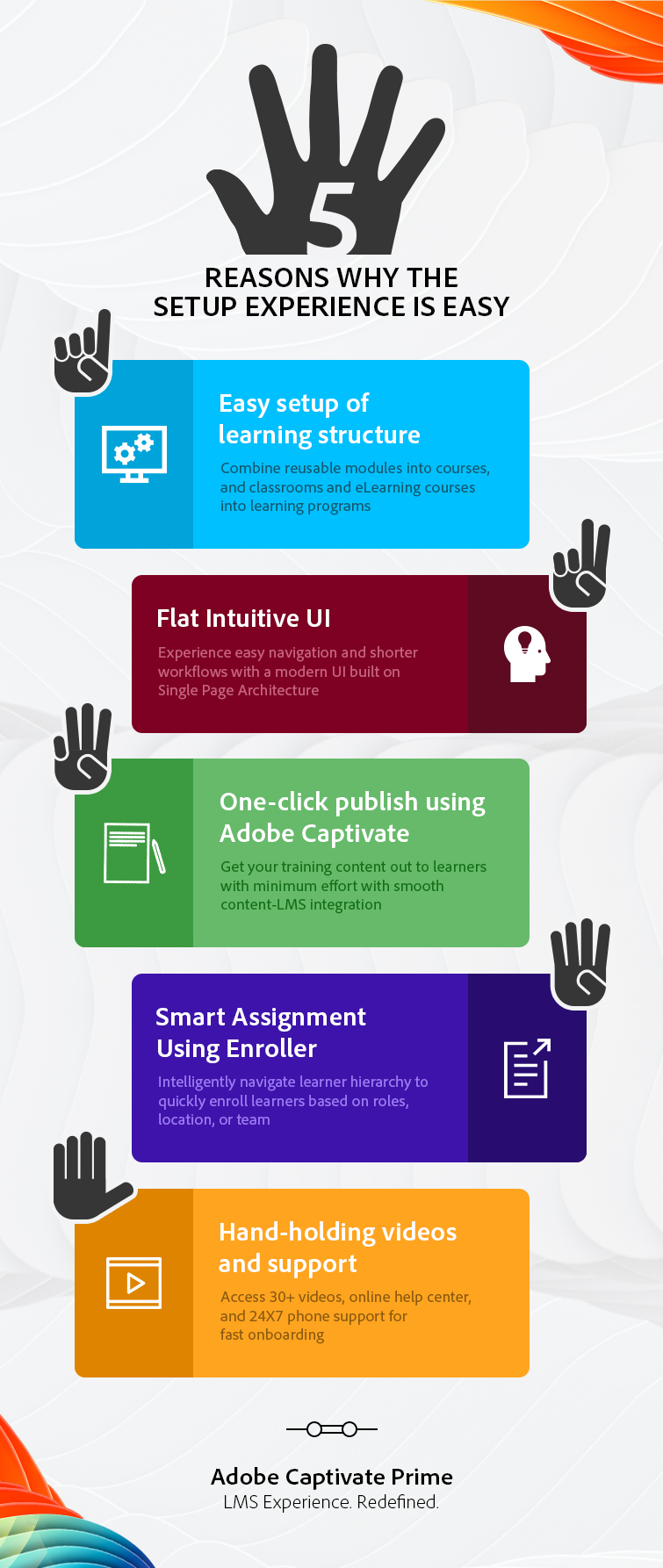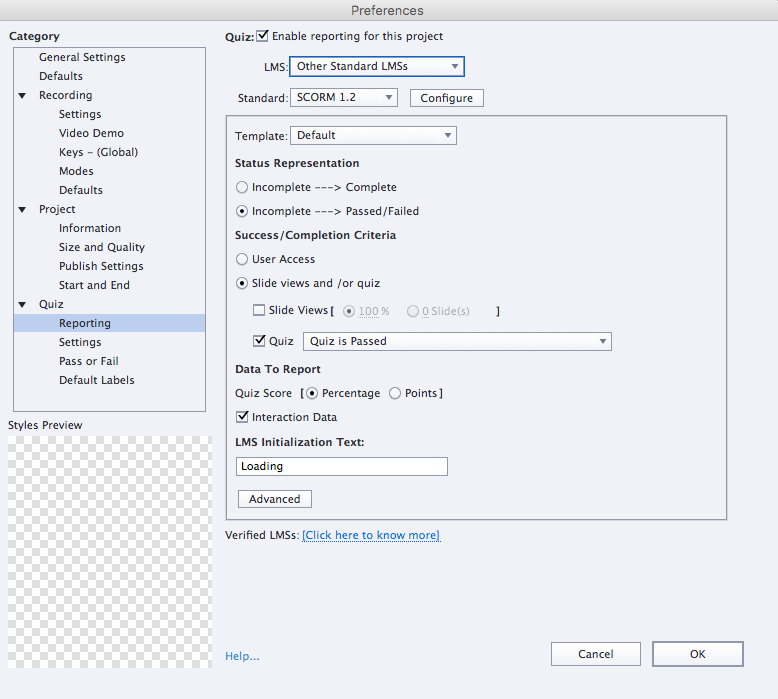

At the end of each quiz, there is a 'Post Score' button which records the learner's score and continues to the final slide. I have multiple project files representing course modules as the preference was for a proficiency assessment for many of the modules. LRSes can exist within traditional LMSes or on their own. Learning experiences are recorded in a Learning Record Store (LRS). xAPI: Experience API (xAPI) launched in 2013, allows a course and an LMS to communicate with each other to record and track all learning experiences.For more information, see the Wikipedia article for AICC. AICC uses HTTP AICC Communication Protocol (HACP) to enable communication between an e-learning course and the LMS. AICC: Aviation Industry Computer-based Training Committee (AICC) is a set of nine recommendations that an eLearning course must comply to.For more information, see the Wikipedia article for SCORM.

There are several versions of SCORM, for example, SCORM 1.2 and SCORM 2004. The Reference Model defines the standards that the LMS must follow when organizing the instructional content. All assets of an eLearning course, such as, image, audio, video, and so on are aggregated into objects, which are then used by the LMS to create the course. SCORM: Shareable Content Object Reference Model (SCORM) is a set of standards for eLearning projects.The course modules that you create with Adobe Captivate can be published and uploaded to your Adobe Captivate Prime account right from within Captivate.Īny LMS, open source and proprietary must comply to certain standards. It is a paid solution available in SAAS (Software as a Service) mode. In this article, we will talk about publishing your Captivate course to Captivate Prime, which is an LMS developed by Adobe. Both types have their own features and configuration options. There are many LMSes available, both open source and commercial.



 0 kommentar(er)
0 kommentar(er)
